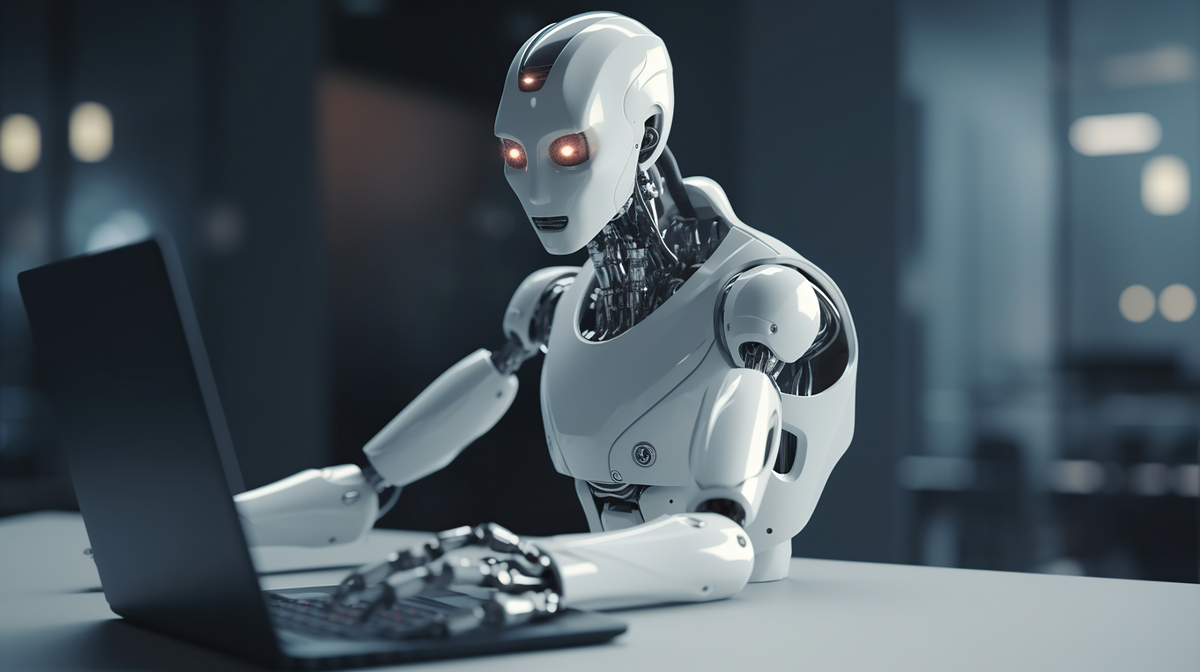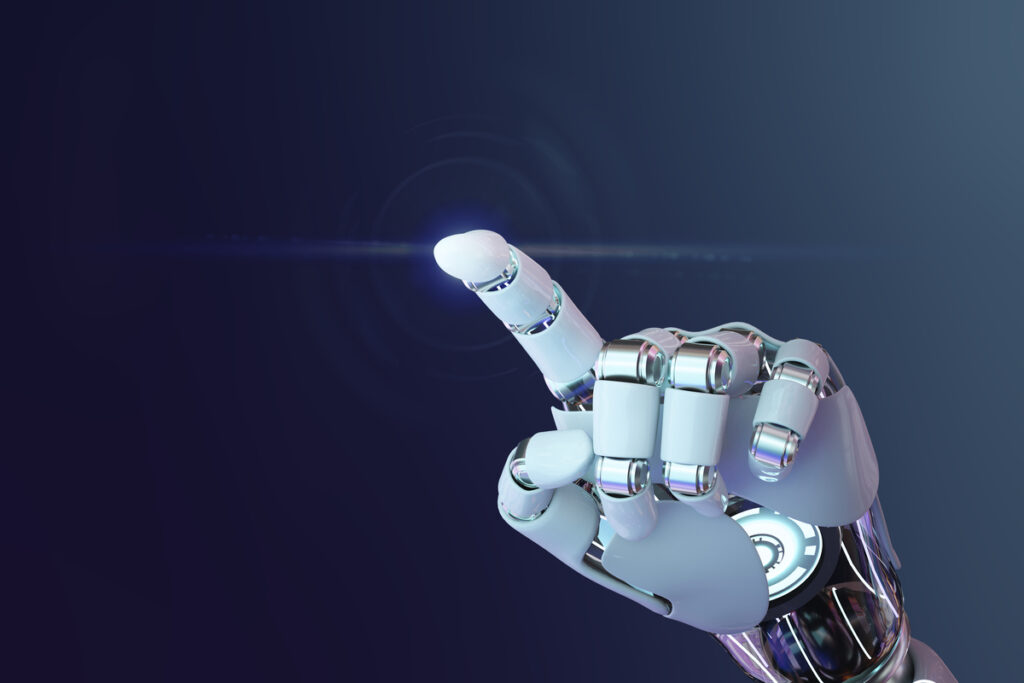Exclusive Neuroject Article: Machine Learning in Construction is revolutionizing the approach to planning, designing, and building structures and infrastructure. Construction industry personnel may make wiser decisions thanks to the ability of machine learning algorithms to analyze vast volumes of data and learn from trends.
These algorithms can find dangers, improve construction schedules, and even forecast equipment breakdowns by looking at prior project data. Efficiency, cost savings, and enhanced project results are all benefits of this construction technology.
Enhancing safety on construction sites is another area where machine learning shines. By analyzing real-time data from sensors and cameras, it can detect potential hazards and promptly alert workers and supervisors, preventing accidents. As machine learning progresses, it has the potential to streamline construction processes, boost productivity, and significantly enhance industry efficiency. Embracing this transformative technology promises a future where construction projects are executed with precision, speed, and heightened safety.
Table of Contents
Introduction to Machine Learning in Construction
Machine learning in Construction has garnered significant attention in recent years, expanding its applications beyond traditional fields like information technology and computer science. With advancements in IoT (Internet of Things) and AI (Artificial Intelligence), the construction industry is now leveraging machine learning to enhance efficiency and productivity. Machine learning, a type of AI, enables machines to learn from data without explicit programming. It utilizes algorithms and statistical models to perform specific tasks.
In the construction sector, machine learning algorithms analyze large datasets to predict issues, optimize schedules, improve safety, and support decision-making. A key challenge in construction projects is planning and scheduling. These algorithms analyze real-time project data, identifying patterns and predicting potential delays based on historical records, weather conditions, and resource availability.
This empowers project managers to make informed decisions and effectively manage the project. Safety is a crucial aspect of construction, and this technology contributes to its improvement. By predicting hazards and analyzing patterns, machine learning utilizes data from sensors and worker movements, equipment usage, and health status. Any anomalies are flagged, allowing for intervention before accidents occur.
Machine learning in Construction also optimizes energy usage and reduces consumption in buildings. Algorithms analyze data from sensors and building automation systems to optimize HVAC systems, lighting, and electrical components. The result is significant energy savings and reduced greenhouse gas emissions.
Quality control and assurance are another area where machine learning finds application. Algorithms analyze inspection data to identify patterns that predict potential defects or quality issues. This knowledge enhances quality control processes and overall project quality.
In conclusion, machine learning has the potential to revolutionize construction processes, from planning to safety and energy optimization. By harnessing these algorithms, construction projects can leverage data more effectively, improving productivity, efficiency, and safety. Embracing this technology and investing in training and research is essential for the construction industry to fully integrate machine learning into its processes.

Suggested article for reading: Sensors in Construction 2024
Key Applications of Machine Learning in Construction
Machine learning, a subset of artificial intelligence, is revolutionizing the construction industry by introducing advanced capabilities that enhance efficiency, productivity, and decision-making. With its ability to analyze vast amounts of data and learn from patterns, machine learning is transforming various aspects of construction processes.
Here are some key applications of machine learning in construction:
Predictive Analytics: Historical data is scrutinized by machine learning methods to forecast project results, pinpoint potential risks, and refine construction timelines. By considering factors such as weather conditions, resource availability, and project dependencies, machine learning empowers project managers to make informed decisions, anticipate delays, and allocate resources efficiently.
Safety Monitoring: These algorithms use data from sensors and cameras to detect possible safety hazards and irregularities at construction sites. Real-time analysis helps identify unsafe conditions, alert workers and supervisors, and mitigate risks, fostering a safer working environment.
Equipment Maintenance: By analyzing equipment performance data, machine learning algorithms can predict maintenance needs and potential failures. This enables proactive maintenance planning, reducing downtime, optimizing equipment usage, and extending equipment lifespan.
Energy Efficiency: Energy usage in buildings is optimized using machine learning in Construction that analyze data from sensors and building automation systems. They can optimize HVAC systems, lighting, and electrical components to maximize energy efficiency, reduce costs, and minimize environmental impact.
Quality Control: Machine learning algorithms analyze data from inspections and identify patterns that can predict potential defects or quality issues. This allows for improved quality control processes, early identification of issues, and increased overall project quality.
Cost Estimation and Resource Allocation: Through the application of machine learning in Construction, companies can enhance cost estimation accuracy and optimize resource allocation. By analyzing historical data and project features, machine learning techniques enable more precise budget forecasts and efficient utilization of resources, setting new standards in the construction industry.
By leveraging machine learning in these applications, the construction industry can benefit from improved project outcomes, enhanced safety, optimized resource management, energy savings, and increased overall efficiency.
Suggested article for reading: Artificial Intelligence or AI in Construction; A Comprehensive Guide to 2024
IoT and Machine Learning in Construction
The combination of IoT (Internet of Things) and machine learning in Construction, making processes more efficient, decisions more informed, and productivity higher. These technologies provide valuable insights and practical intelligence that are reshaping how construction projects are planned, executed, and managed.
IoT connects devices, sensors, and equipment on construction sites, generating a lot of data. Machine learning analyzes this data to find meaningful patterns and insights. It helps predict issues, optimize construction processes, and improve efficiency.
Real-time monitoring and predictive maintenance are important applications. IoT sensors collect data on equipment performance, usage, and conditions. Machine learning algorithms analyze this data to detect problems and predict equipment failures, allowing for proactive maintenance.This reduces downtime and saves money.
Safety management benefits from IoT and machine learning in Construction as well. Sensors monitor worker’s movements and potential hazards. Machine learning algorithm analyzes the data to identify unsafe conditions, predict risks, and send alerts. This prevents accidents and improves overall safety.
Optimizing resource allocation and scheduling is another advantage. IoT devices track materials and equipment, while machine learning algorithms analyze the data to optimize resource usage and streamline supply chain management. This improves efficiency, reduces delays, and saves costs.
Risk management is enhanced through machine learning in Construction and IoT. By analyzing historical and real-time data, algorithms identify potential risks like delays or cost overruns, supporting decision-making for risk management strategies.

Suggested article for reading: Construction Monitoring Solutions; Your Complete Guide
Cost Prediction in Construction Projects with Machine Learning
Cost prediction is a crucial aspect, and machine learning in Construction offers potential to enhance the accuracy of these predictions. Construction projects often face budget overruns, causing delays and negative financial impacts. Thus, it is imperative to mitigate cost overruns through effective prediction and control of construction costs. Machine learning algorithms have emerged as a promising tool to address this challenge by leveraging the increasing availability of construction project data to make more precise cost predictions.
A key consideration in using machine learning algorithms for cost prediction is the selection of suitable and reliable training data. The datasets utilized should contain relevant information and various data points that can effectively predict the likelihood of budget overruns. Construction companies now capture project data that correlates closely with costs, including project management outputs, contractual details, schedules, and resource usage. This aggregated data provides a solid foundation from which machine learning algorithms can derive accurate cost predictions.
The choice of machine learning in Construction depends on factors such as the size of the dataset, the number of independent cost-related variables, and the complexity of the model. Factors like the type and format of the data also influence model selection. Commonly used algorithms for cost prediction in construction include artificial neural networks, decision trees, logistic regression, support vector machines, clustering, and data mining. Ensemble methods that combine multiple machine learning techniques can also yield highly accurate cost models.
Furthermore, several factors influence construction cost estimations, such as site characteristics, market fluctuations, project requirements, and climate changes. Machine learning algorithms can forecast these factors, enabling construction companies to proactively prepare for potential cost drivers. By leveraging advanced algorithms, construction companies can anticipate disruptions and take timely corrective actions.
The primary benefit of using machine learning in cost prediction is the significant improvement in accuracy. These algorithms utilize past project data to generate precise cost predictions. Once trained, these models can adapt to changing conditions, allowing for early detection of significant cost changes and enabling construction companies to take decisive corrective measures.

Enhancing Construction Quality Control through Machine Learning
Maintaining high-quality standards is crucial in our industry to ensure successful projects and satisfied clients. Machine learning in Construction is proving to be a valuable tool for enhancing quality control processes and achieving superior construction outcomes. By leveraging data analysis, pattern recognition, and predictive modeling, machine learning empowers construction professionals to detect potential defects, optimize quality control procedures, and drive continuous improvement.
Machine learning algorithms have the capability to analyze extensive construction data, including design documents, inspection reports, and project performance metrics. By scrutinizing this data, these algorithms can identify patterns and anomalies that may indicate quality issues, enabling early detection of problems and facilitating prompt corrective actions to uphold desired quality standards.
One of the notable advantages of machine learning in Construction quality control is its ability to adapt and learn from new data. As more construction projects are completed and additional data becomes available, these algorithms refine their models and enhance their accuracy over time. This iterative learning process ensures ongoing improvement in quality control, resulting in better project outcomes.
Machine learning in Construction also streamlines the inspection process by automating certain tasks. By training algorithms on extensive datasets of inspected components or structures, machine learning can identify common defects and anomalies, leading to more efficient and effective inspections. This reduces reliance on manual inspections, saves time, and enhances overall productivity in quality control efforts.
Another application of these technologies in quality control is predictive analytics. By analyzing historical data and recognizing correlations between various project factors and quality outcomes, machine learning algorithms can predict potential quality issues in future projects. This allows project teams to proactively address risks, allocate resources effectively, and implement preventive measures to uphold high-quality standards.

How Does Machine Learning in Construction Impact the Workforce?
Machine Learning in Construction significantly impacts the workforce, offering both opportunities and challenges as it becomes increasingly common in multiple sectors.
Here are some key ways in which machine learning affects the workforce:
Automation and Job Changes: Machine learning algorithms have the ability to automate repetitive and mundane tasks traditionally performed by humans. This automation can lead to job changes and displacement, as machines become more proficient in these tasks. However, it also creates opportunities for workers to transition to more strategic, creative, and complex roles that require human expertise.
Skill Requirements and Learning: The integration of machine learning often necessitates a shift in the skills required by the workforce. As automation takes over certain tasks, there is a growing demand for workers skilled in areas such as data analysis, algorithm development, and machine learning itself. Upskilling and continuous learning become essential for workers to adapt and thrive in the evolving job market.
Collaboration and Augmentation: Rather than completely replacing humans, machine learning augments human capabilities. It provides tools and insights that support decision-making and enhance productivity. Human-machine collaboration allows for a combination of unique strengths, where machines assist humans in making informed decisions, streamlining processes, and improving overall efficiency.
Emerging Job Roles and Opportunities: The rise of machine learning in Construction creates new job roles and opportunities. These include positions such as data scientists, engineers, AI trainers, and experts in ethical AI practices. The demand for professionals with expertise in machine learning and related fields continues to grow, offering avenues for career advancement and specialization.
Ethical Considerations: This technology introduces ethical and social implications that must be addressed. Concerns such as data privacy, algorithmic bias, and transparency in decision-making require careful attention. Workforce training programs need to incorporate ethical considerations to ensure responsible and inclusive use of machine learning in Construction.

How Machine Learning in Construction Supports Green Building Practices
Machine learning in Construction plays a crucial role in supporting and advancing green building practices, contributing to more sustainable and environmentally responsible construction and operation of buildings. By harnessing the power of data analysis, pattern recognition, and predictive modeling, enabling various benefits that promote energy efficiency, occupant comfort, waste reduction, and sustainable design optimization.
Here are some key ways in which machine learning supports green building practices:
Energy Efficiency: Machine learning algorithms analyze energy consumption patterns, weather data, and building performance to identify opportunities for energy savings. By learning from historical data, these algorithms optimize HVAC systems, lighting controls, and other energy-intensive processes, reducing energy consumption and lowering carbon emissions. Real-time energy monitoring allows for dynamic adjustments and proactive energy management.
Predictive Maintenance: Machine learning algorithms predict equipment failures and maintenance needs by analyzing sensor data and building system performance. This helps prevent costly breakdowns and ensures optimal operation. By detecting patterns, machine learning algorithms schedule maintenance tasks efficiently, extending equipment lifespan, and reducing resource waste.
Occupant Comfort: Machine learning algorithms learn from occupant preferences and environmental conditions to optimize indoor comfort. By analyzing data on temperature, humidity, lighting, and user feedback, these algorithms adjust building systems in real-time, creating ideal conditions while minimizing energy usage. This enhances occupant satisfaction, productivity, and reduces energy waste.
Waste Reduction: Machine learning contributes to minimizing construction and operational waste. By analyzing data on material usage, waste generation, and recycling practices, machine learning algorithms identify opportunities for waste reduction, optimal material selection, and recycling strategies. This promotes sustainable construction practices and reduces environmental impact.
Sustainable Design Optimization: Machine learning in Construction assists architects and designers in optimizing building designs for sustainability. By analyzing extensive datasets on building performance, environmental factors, and energy usage, machine learning algorithms generate insights that enhance design decisions. This aids in optimizing building orientation, facade design, shading strategies, and the integration of renewable energy, resulting in more energy-efficient and environmentally friendly buildings.

Suggested article for reading: The Top 7 Green Architecture Projects
Tips for Successful Machine Learning Adoption
Achieving successful adoption of machine learning in Construction requires careful planning, implementation, and continuous improvement.
Here are five key tips to ensure a successful machine learning adoption:
Define Your Goals and Objectives explicitly: Before you begin using machine learning, explicitly define your goals and objectives. Decide on specific difficulties or issues that machine learning can help resolve, such as increasing productivity, improving the customer experience, or producing better data-driven decisions. Clarity in your machine learning initiatives’ objectives gives them emphasis and direction.
Ensure Good Data: Make sure you have reliable, accessible data for machine learning. Good data is essential for effective machine learning. Invest in collecting and organizing high-quality data that is easy to access. This will ensure that your machine learning models are trained on accurate and diverse datasets.
Start Small and Learn: Begin with small, manageable projects to gain experience and build knowledge. Don’t try to tackle complex problems right away. Starting small allows you to learn and improve gradually. Test different algorithms and understand the specific challenges within your organization. As you learn, you can gradually expand and scale your machine learning initiatives.
Foster Collaboration: Encourage collaboration between data scientists, experts in the field, and other stakeholders. Successful machine learning in Construction implementation requires teamwork. Promote open communication and collaboration between different teams to combine technical expertise with industry knowledge. This will help align machine learning efforts with the overall goals of your organization.
Continuously Learn and Evaluate: Machine learning in Construction is an ongoing process. Stay updated with the latest trends and best practices in the field. Continuously evaluate the performance and impact of your machine learning models. Be prepared to make improvements and adjustments as needed. Regularly assess the value generated by your machine learning initiatives and ensure they align with your organization’s strategic objectives.

Future Trends: The Evolution of Machine Learning in Construction
Machine learning has undergone a remarkable evolution in the construction industry, revolutionizing project planning, execution, and management. Initially, its applications in construction were limited, but advancements in technology and the availability of extensive data have expanded its potential.
Here is an overview of how machine learning has evolved in the construction sector:
Early Stages: Initially, machine learning in Construction focused on basic tasks like data analysis, forecasting, and pattern recognition. These applications aimed to enhance decision-making processes and improve operational efficiency.
Predictive Analytics: As machine learning algorithms advanced, their ability to predict outcomes and identify patterns improved significantly. Predictive analytics became vital in areas such as cost estimation, risk assessment, and project scheduling. Machine learning models learned from historical data to make accurate predictions, thereby supporting effective project planning and control.
Real-time Monitoring and Automation: With the advent of sensor technology and the Internet of Things (IoT), machine learning expanded into real-time monitoring and automation. Sensors deployed at construction sites and on equipment collected data, which machine learning algorithms analyzed to detect anomalies, predict maintenance needs, and optimize resource allocation.
Computer Vision and Image Analysis: Machine learning algorithms started leveraging computer vision techniques to analyze visual data from construction sites. They could identify defects, monitor progress, and ensure adherence to safety standards by analyzing images and videos captured on-site.
Optimization and Decision Support:
These algorithms began providing optimization and decision support in construction operations. They optimized resource allocation, schedule sequencing, and material usage to minimize waste and enhance productivity. Machine learning in Construction also aided equipment and fleet management, reducing downtime and improving operational efficiency.
Resources:
For all the pictures: freepik



